Search the Special Collections and Archives Portal
Search Results
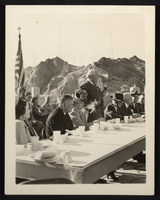
Photograph of the Rotary Club, Hoover Dam, circa October 1946
Date
Archival Collection
Description
An image of Rotary Club members having lunch at Boulder Dam while an unidentified man stands up to give a speech. Note: Boulder Dam was officially renamed Hoover Dam in 1947.
Image
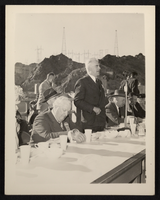
Photograph of the Rotary Club, Hoover Dam, October 1946
Date
Archival Collection
Description
An image of Rotary Club members having lunch at Boulder Dam while an unidentified man stands up to give a speech. Note: Boulder Dam was officially renamed Hoover Dam in 1947.
Image

Photograph of the Rotary Club, Hoover Dam, circa October 1946
Date
Archival Collection
Description
An image of Rotary Club members having lunch at Boulder Dam while an unidentified man stands up to give a speech. Note: Boulder Dam was officially renamed Hoover Dam in 1947.
Image

Photograph of the Rotary Club, Hoover Dam, circa October 1946
Date
Archival Collection
Description
An image of Rotary Club members having lunch at Boulder Dam while Governor Vail Pittman gives a speech. Note: Boulder Dam was officially renamed Hoover Dam in 1947.
Image
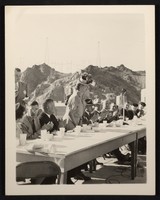
Photograph of the Rotary Club, Hoover Dam, circa October 1946
Date
Archival Collection
Description
An image of Rotary Club members having lunch at Boulder Dam while an unidentified woman stands up to give a speech. Note: Boulder Dam was officially renamed Hoover Dam in 1947.
Image
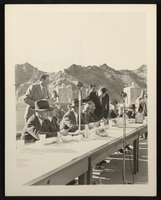
Photograph of the Rotary Club, Hoover Dam, October 1946
Date
Archival Collection
Description
An image of Rotary Club members having lunch at the Boulder Dam. Earl Brothers is also present in this photo. Note: Boulder Dam was officially renamed Hoover Dam in 1947.
Image

Photograph of the Rotary Club, Hoover Dam, circa October 1946
Date
Archival Collection
Description
An image of Rotary Club members having lunch with Governor Vail Pittman at Boulder Dam. Note: Boulder Dam was officially renamed Hoover Dam in 1947.
Image
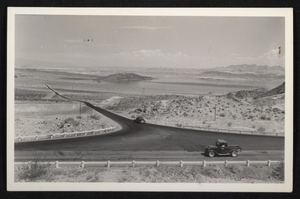
Photograph of Boulder Highway at the South Shore Road turnoff, Lake Mead, circa 1935
Date
Archival Collection
Description
Image
Rocha, Fernando, 1994-
Coming from Durango and Tijuana, Mexico, Fernando Rocha’s parents met in Los Angeles in the mid-90s. Working in the sheet metal industry, his father’s career would take them to Las Vegas during the boom of the early 2000s to the slot machine industry where they would establish their family in Sunrise Manor. Little did he know that his son would later become a corporate banker working alongside the same industry with Wells Fargo.
Person
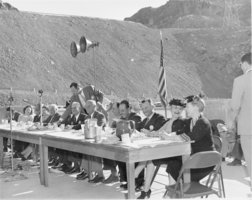
Film transparency of the Rotary Club at the Hoover Dam Decennial, October 1946
Date
Archival Collection
Description
A black and white image of several unidentified men and women associated with the Rotary Club attending the Boulder Dam decennial (officially renamed Hoover Dam in 1947).
Image
